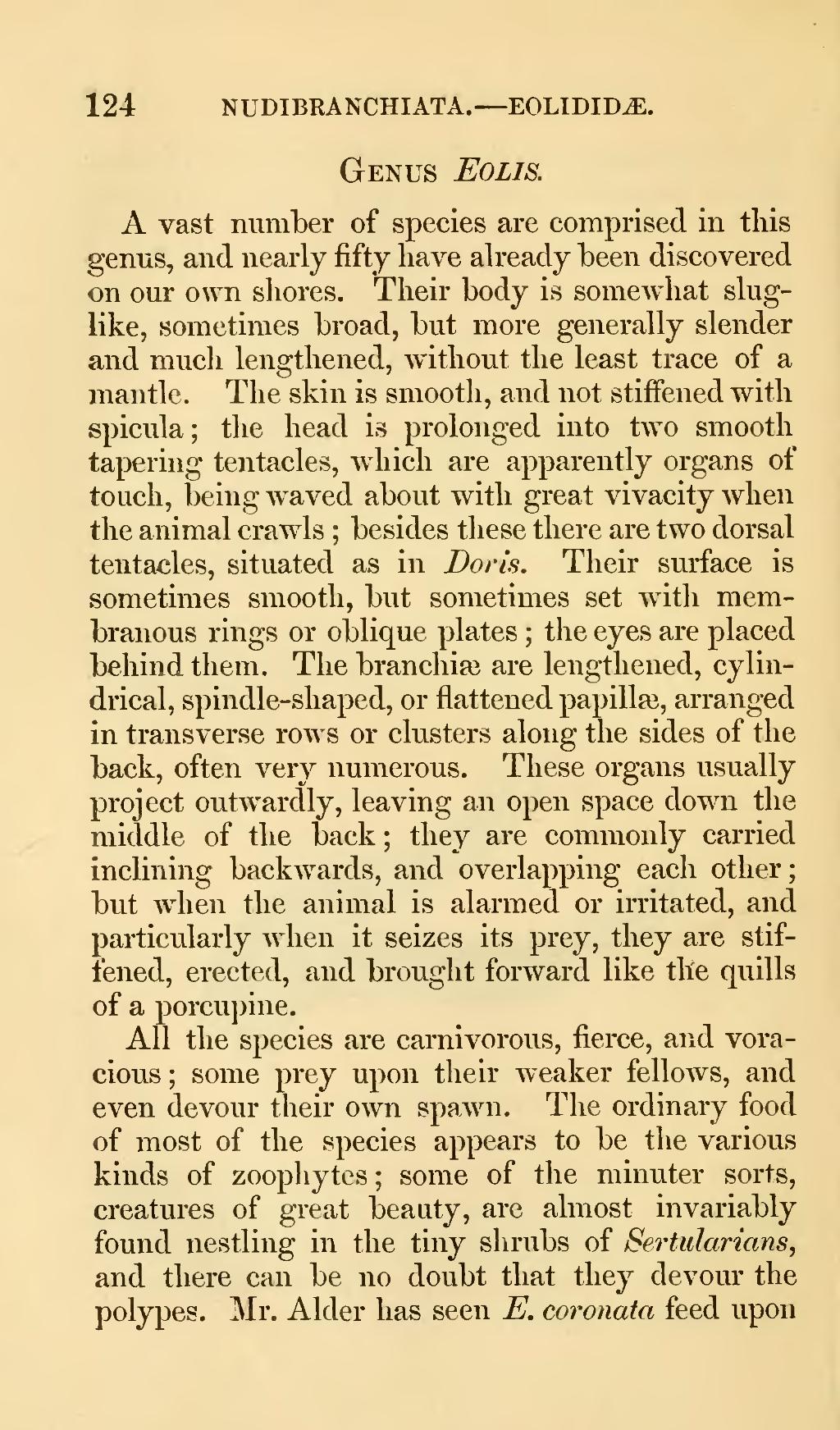Genus Eolis.
A vast number of species are comprised in this genus, and nearly fifty have already been discovered on our own shores. Their body is somewhat slug-like, sometimes broad, but more generally slender and much lengthened, without the least trace of a mantle. The skin is smooth, and not stiffened with spicula; the head is prolonged into two smooth tapering tentacles, which are apparently organs of touch, being waved about with great vivacity when the animal crawls; besides these there are two dorsal tentacles, situated as in Doris. Their surface is sometimes smooth, but sometimes set with membranous rings or oblique plates; the eyes are placed behind them. The branchiæ are lengthened, cylindrical, spindle-shaped, or flattened papillæ, arranged in transverse rows or clusters along the sides of the back, often very numerous. These organs usually project outwardly, leaving an open space down the middle of the back; they are commonly carried inclining backwards, and overlapping each other; but when the animal is alarmed or irritated, and particularly when it seizes its prey, they are stiffened, erected, and brought forward like the quills of a porcupine.
All the species are carnivorous, fierce, and voracious; some prey upon their weaker fellows, and even devour their own spawn. The ordinary food of most of the species appears to be the various kinds of zoophytes; some of the minuter sorts, creatures of great beauty, are almost invariably found nestling in the tiny shrubs of Sertularians, and there can be no doubt that they devour the polypes. Mr. Alder has seen E. coronata feed upon
